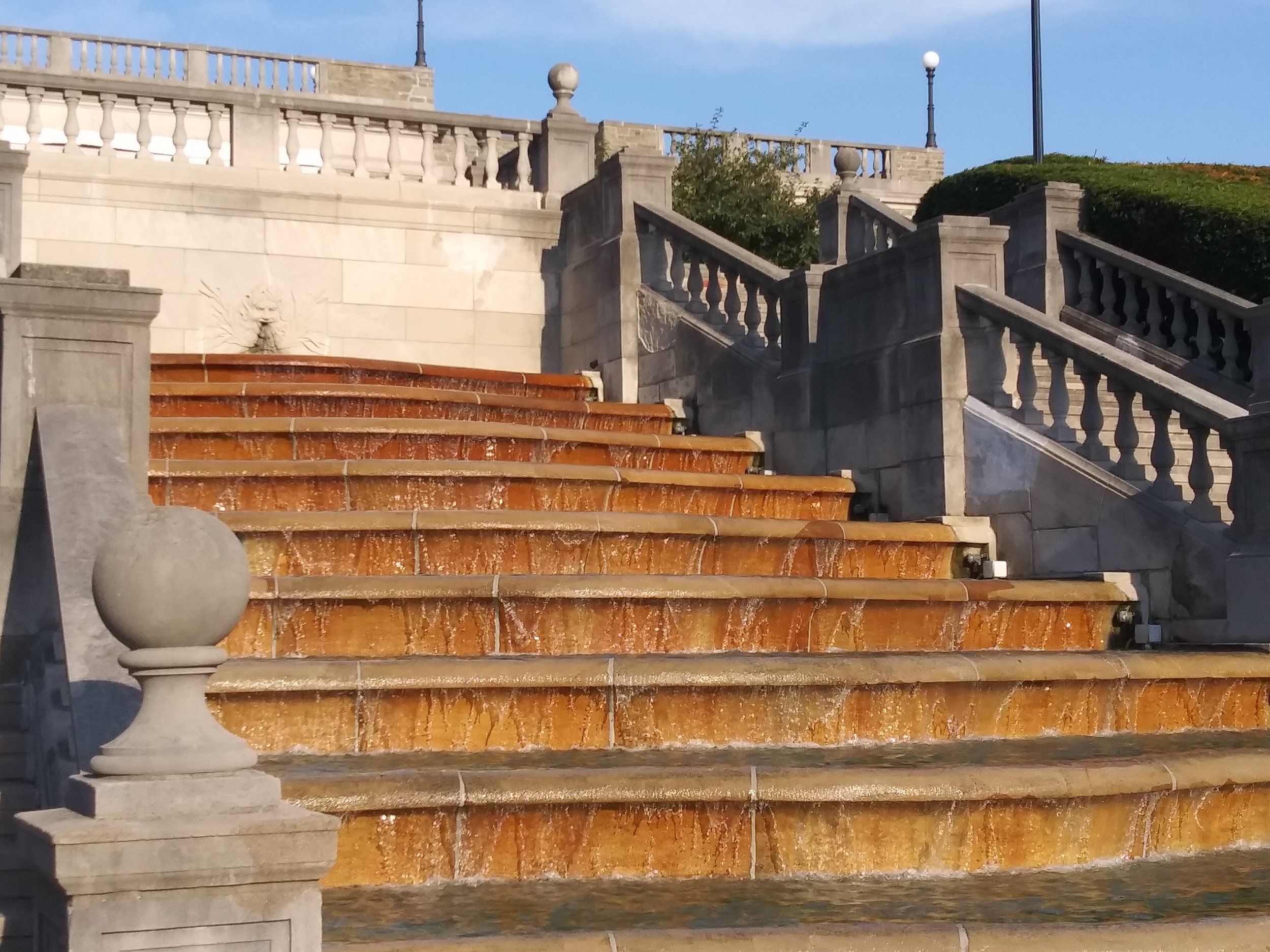My Money's on the Hare
An errand brought me to Ault Park a couple of weeks ago, where I happened upon a fountain, which I decided to try painting. Here’s a snapshot of what I saw:
Sometimes one wants to paint something just to see if it can be painted. I did a small sketch of the motif.
It was kinda fun. I especially enjoyed describing big stone blocks with a single stroke of a broad brush.
But I did wonder if I could describe the scene in a more finished, and larger, piece, so I came back a couple of days later with a 20x24”. The light wasn’t quite right, which didn’t bother me. I figured I’d dedicate the session to drawing out the motif as accurately as I could, using a brush and some thinned Yellow Ochre.
It’s a fairly accurate line drawing, but there is a peril in doing this sort of thing. I gave all of my attention to mapping out the lines of the scene, rather than giving full consideration to its composition. Was it a nice pattern of lights and darks? were the shapes pleasing? That sort of thing. I knew I was bypassing a very important consideration, but I figured I’d try solving one problem at a time. This proved to be a mistake, and a silly mistake. I had a sketchpad and a pencil. I could have played with the scene and anticipated problems before touching the canvas. It reminds me of the question, “Is it necessary to floss one’s teeth?” The answer, of course, is “Only the ones you want to keep.”
“Is it necessary to sketch out a composition before beginning to apply paint?”
“Only if you don’t want it to end up like this one did.”
Anyway, I returned to the scene on the next sunny day and did the best I could.
The problem I had been pretending not to notice is fairly obvious here, at least to me. There are two illuminated areas of the canvas, unconnected. It looks like two or three separate pictures. Yeah, rules are made to be broken, but this never stopped bugging me. One might protest that this was just a study of a scene, and that’s true, but its disjointed nature left a bad taste in my mouth.
Subsequent sessions never overcame the problem. I did learn some things about capturing the texture of water, and keying a picture to simulate the shimmer of sunshine, but for all the effort taught me, it never stopped feeling like a ball and chain.
Carrying my stuff the hundred yards between where I parked and where i painted, i kept noticing that the shadows were really quite blue, much more than I’d painted them. So I mixed some blue with some red and white and scumbled the shadows. Then I painted into the scene. I softened the water a little.
Which brought me to today, the last day. Did what I could to bring things together and simulate the shimmering sunlight on the water. But it’s hard to apply finish to a composition that you find boring to begin with. I gave it a couple of hours and decided I’d taken it as far as I could.
Twelve hours of work, not counting the oil sketch that started the whole enterprise. Nothing could pretty up a composition I didn’t believe in.
So I figured, since I was there already, maybe another strategy might be in order.
Why not take in a larger scene and try to sketch it in oil on paper? I just happened to have one of the 11x14” sheets of kraft paper, taped to cardboard and sized with shellac. I allowed myself one hour, as opposed to the twelve hours I gave the failed study. Let’s review, shall we?
We’ll call this one The Tortoise:
And we’ll call this one The Hare:
Aesop got it wrong. This one’s more fun, and more interesting.
I have spoken.









